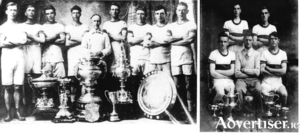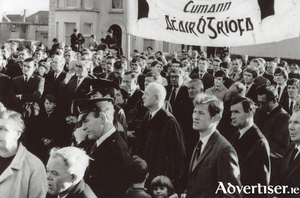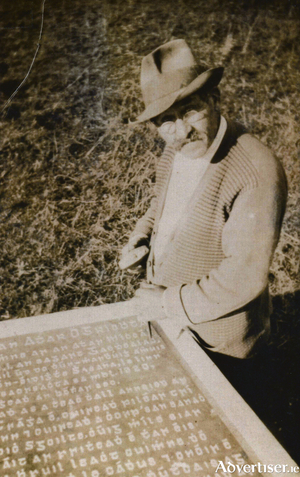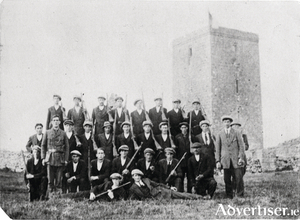Search Results for 'Martin Fahy'
6 results found.
Menlo heroes

On this day 85 years ago, the fourth of July 1929, rowing history was made at Galway Regatta when a crew from the Menlo Emmetts Club brought the Senior Eights Championship trophy to Galway for the first time. All of the crew were from the small village a few miles up the Corrib, were native Irish speakers, and had lived locally and worked by the river all of their lives.
The unveiling of a plaque to Fr Griffin

On November 14, 1920, a young curate, Father Michael Griffin, was lured from his house at No 2 Montpellier Terrace by the Black and Tans. Whatever ruse they used to get him out of the house, it was not to go on a sick call, as he did not take the holy oils or the Eucharist with him, but went peacefully. He went missing and volunteers and search parties were organised and combed the city and surrounding countryside looking for him. A week later his body was found buried in a bog at Cloch Sgoilte in Barna. There was an international outcry. He had worked in the parish of Rahoon since June 1918 and was hugely popular. He spoke in Irish to young and old, organised feiseanna, currach races, and donkey races on Silver Strand. He was very republican and was suspected by the Tans of having heard the last confession of the informer Patrick Joyce, which was probably the reason why they abducted him and tried to extract the identity of Joyce's killers from him.
Save Roscam Peninsula campaign says prioritise needs of families
In a impressively comprehensive submission to the Galway City Development plan 2023-2029 the Save Roscam Peninsula campaign has called on the City Council to protect the unique archaeological, cultural and open spaces of the Roscam Peninsula.
Stone mad

Like most towns, Galway was built using native stone and there was plenty of that around. There were black limestone quarries in Menlo and Angliham, and a limestone quarry at Merlin Park worked by the Blake family until about 1850 and later by Sibthorpes of Dublin. In about 1880, a Scotsman named Millar rented a number of quarries in the Galway area, two at Shantalla, one at Ballagh near Bushy Park, and one at St Helen’s, Taylor's Hill, where they quarried fine-grained red granite. There was a marble and granite works at Earl’s Island where one of the employees was a stonemason named Pat Fahy.
Hard work over many years is paying off
It should not come as any surprise to see the success of this St Thomas’ side. All the way, much of this group played together and won together at underage.
The First Galway Brigade, 2nd Battalion

During the War of Independence, the Volunteers, for organisational purposes, divided the country into divisions. Connacht and County Clare were split into four such sections. In each of these, the members were divided into brigades, battalions, companies, and flying columns. The First Galway Brigade was divided into three battalions, Castlegar, Claregalway, and Headford.

